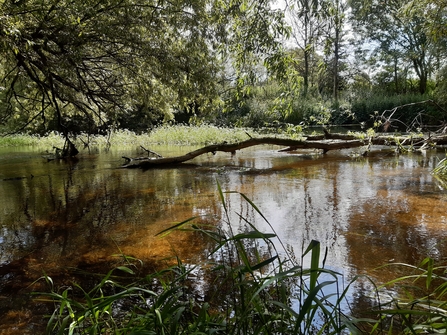Not long ago, the extra bright full moon that lit up the sky may have caught your eye. Friday 15 November’s supermoon is referred to as the ‘Beaver Moon’ due to beavers being particularly active at this time of year, preparing their dams and food caches for the winter months.
Autumn is certainly an active season for beavers, as these industrious mammals shift more of their attention to trees. Not only do they use tree material to reinforce their dams, but trees also become an increasingly vital food source as the luscious herbaceous vegetation on the riverbanks and aquatic plants of summer begin to die back.





